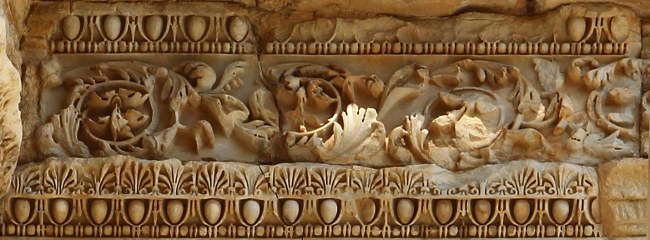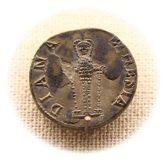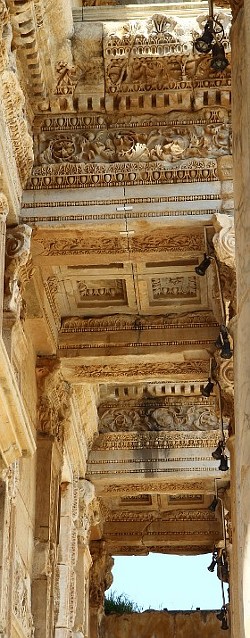
The Ancient City of Ephesus
March-28-2012
Ephesus Turkey
Published on 1-April-2012 by Ray Fried
Historical Significance
Ephesus is located about 250 miles south of Istanbul on the west coast of Asia Minor. It was originally a Greek city but later became a major Roman city. In the first century it had a population of 250,000 people. It contaıned one of the 7 churches of Asia mentioned in the book of Revelation. The apostle Paul frequented the place and spent about 2 years there.
You can learn more about the city by going to Wikipedia.
Also a good blog on Ancient Ephesus and the New Testament is available.One would have to conclude that God certainly chose a high point in human development to institute the New Testament.
Historical Accuracy
One of the impressive things about Ephesus was the consistency with relevant materials written of
in the book of Acts.  Of course Luke was very careful to do much research for his writings. As you walk
through the old city and read the signs you come away with the same thoughts about cults, false worshippers,
political maneuvering and fickleness of the residence that Luke presented.
Of course Luke was very careful to do much research for his writings. As you walk
through the old city and read the signs you come away with the same thoughts about cults, false worshippers,
political maneuvering and fickleness of the residence that Luke presented.
Photo Viewer
Below are some photos taken at the Ephesus site and also the Ephesus Museum. To view them, just click on any thumbnail below as a starting point. Then you can either press "N" for the next photo or "P" for the previous picture. If you place your mouse near the upper left or right of each expanded picture, you can also navigate by clicking on Prev or Next. When finished, click on "CloseX".
Architectural Elegance
 The photo at the top of this page is actually a small part of the Library of
Celsus soffit (photo to right). The library was built shortly after Paul's time but is a wonderful
example of the architectural splendour of the time.
The photo at the top of this page is actually a small part of the Library of
Celsus soffit (photo to right). The library was built shortly after Paul's time but is a wonderful
example of the architectural splendour of the time.
You can see a more complete view of the library by using the Photo Viewer to the left. The viewer contains photos taken at the city site and also the Ephesus Museum in nearby Selçuk.
Since Ephesus was the capital of the province of Asia during the Roman Empire, it was the most densely populated city in Anatolia (Asia Minor or westernmost protrusion of Asia). The privileged individuals, the wealthy and ruling classes lived in the city center while others lived on the outskirts of the city.
Terrace Houses
(Copied from a sign on the site.) The terrace houses are located in the center of Ephesus, on the slopes of Curetes Street. The conveniences of lavish decoration of the houses and the fact that no labor or expense was spared in their construction, show that the people who inhabited these houses were no ordinary citizens.
The terrace houses are extremely beautiful and well-developed examples of peristyle houses. The peristyle, located in the center and open to the sky, would provide light and fresh air to the house. In these houses which had two and sometimes three stories, the lower floor would contain the rooms concerned with daily life (such as living and dining rooms, kitchen, toilet and heating center/steam bath), and the upper floors, rooms such as the bedrooms and children's rooms.
In the construction of the houses, building materials appropriate to the climate were employed, which would remain cool in the summer and warm in the winter. A central heating system was installed, and both hot and cold water were available from the running water supplied by the expensively decorated fountains.
Mosaics ostentatiously adorned the floors, and frescoes covered the walls. In these decorations, topics were portrayed which suited contemporary tastes, such as designs and figures, and scenes from mythology and theatre shows. This fact shows that the owners of these houses had great interest in the fine arts and culture.



















